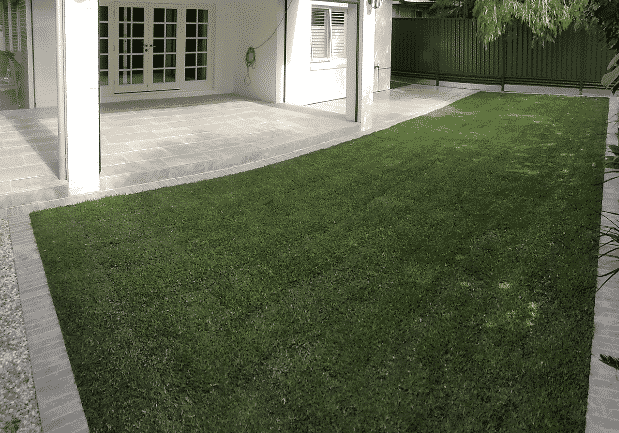If you are reading this, you’re probably thinking about how to improve your lawns and looking into choosing the right lawn grass types for your landscape.
Maybe you’re gazing sadly at your existing lawn, wishing it was green and springy like it used to be, instead of sparse and brown!
Or maybe you are planning a new build or renovation, and want to get everything right the first time.
Let’s face it, most of us don’t know much about grass — our lawn is something that is just there, doing its job, keeping the backyard from becoming a dustbowl, or making the front yard look presentable.
We often inherit someone else’s choice of lawn, and don’t even necessarily know what type of grass we have!
If you are planning to establish a new lawn, the type of grass you choose will impact your landscape, and even lifestyle, in the future. It will determine how often you need to mow, and the amount of maintenance required; like how much water and fertiliser are needed.
Choosing a grass type that doesn’t suit your conditions may mean your lawn dies in winter or struggles in summer.
Your home’s value can also be enhanced by a beautiful lawn, while a scruffy lawn can detract from ‘street appeal’.
So whether you are building, revamping, or starting over because your old lawn is beyond repair, do your homework before you commit. It might help you avoid a lifetime of being a slave to your lawn!
- Lawn Grass Types in Australia
- What to Consider When Choosing Types of Grass
- What to Consider When Choosing Types of Grass for Your Lawn
- Grass Types in Western Australia
- Buffalo grasses – ‘Palmetto’ and ‘Sir Walter’
- Zoysia grasses – ‘Empire’, ‘Sir Grange” and ‘Platinum’
- Couch Grasses – ‘Bermuda’ and ‘Wintergreen’
- The right grass for you – make the choice with Perth Landscaping Experts
Lawn Grass Types in Australia
There are a variety of lawn grass types available in Australia, but not all of them are suited to Perth’s unique climate and sandy soil.
Grass types in Australia are often those that have succeeded in the US or Asia, suited to either temperate or tropical climate zones.
Western Australia includes several climate zones. Perth homeowners may find success with both warm and cold season grass types.
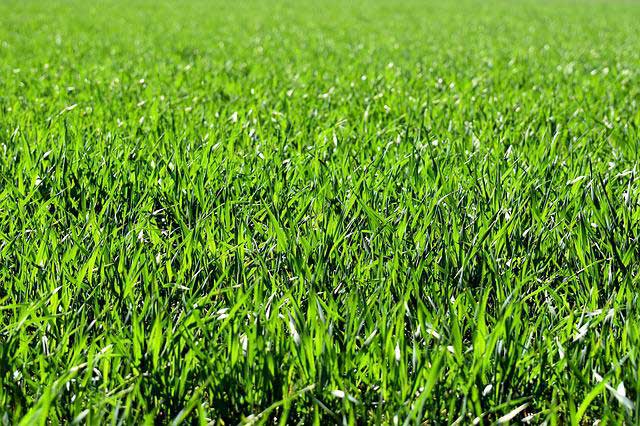
What to Consider When Choosing Types of Grass
Before choosing types of grass to plant or deciding to lay turf, consider what you want from your lawn, and what you are willing to do.
- Do you just need a tough, serviceable lawn that will be low maintenance, and safe for kids to play on?
- Or do you want a truly beautiful lawn to complement an upmarket home – soft underfoot, and brilliant green in colour.
- Is your budget strict? Or will you pay whatever is needed to get the right result?
- What about the time and effort you are willing to put in to establish and maintain a new lawn?
To get the result you want, you need a plan and a realistic idea of what’s involved.
Deciding whether to lay turf or grow a new lawn from seed or runners
The best lawn grass choice can transform your garden, adding value to your property and creating a lush green environment. Grass can even help to cool your garden, and make the garden safer and more enjoyable for you, your children and your pets.
So what is involved in choosing lawn grass?
Well, before you choose your grass type and method of establishing a new lawn, it pays to consider:
- your soil
- the ‘micro climate’
- water availability
- how much sun the area gets
- how much time you can spend establishing and maintaining your lawn
- your budget.
The pros and cons of growing grass from seed (or runners)
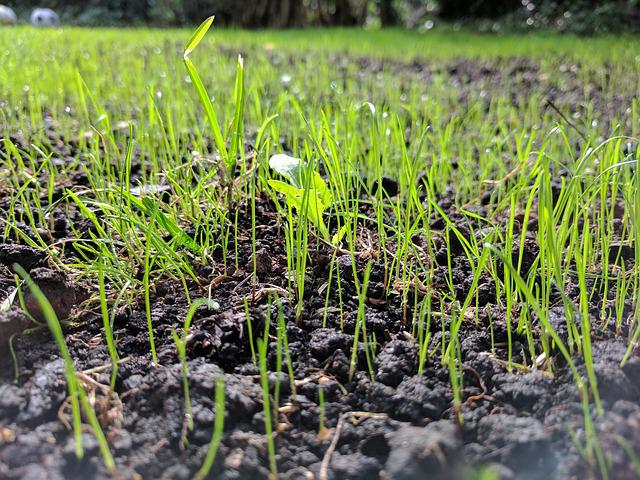
PROS of growing grass from seed:
- affordability
- no great skill, strength or stamina is needed
- wide choice of grass types
- lawn seeds can be a blend of grasses, for a hardier lawn.
Some grasses won’t grow from seed, only from runners.
CONS of growing grass from seed (or runners):
- seeded lawns may need reseeding several times (birds can devour seed, rain can wash it away)
- weeds invade seeded and runner lawns in the early stages
- it will be months before the lawn is usable
- the season for establishing these lawns is limited
- grass can die if conditions aren’t right.
- a lot of watering is needed for the first few months – if you work long hours it may not be practical to grow grass from scratch.
The pros and cons of laying turf
The PROS of turf include that it:
- is the quickest, easiest way to establish a new lawn
- gives a high quality, consistent look
- is usable within weeks
- will always be a grass suited to local conditions.
The CONS of turf include:
- it is expensive, especially for large areas
- there are extra costs (or heavy work) in preparing the site and laying turf
- the choice of grass types is slightly more limited than with seed.
Talk to a landscaper with expertise in lawns (like Perth Landscaping experts!) for advice before deciding on grass types.
What to Consider When Choosing Types of Grass for Your Lawn
Growing conditions
First, consider your soil type. For sandy soil, choose grass that likes to be well-drained.
Think about your ‘microclimate’ – salt air, frost, shallow soil, overshadowing, urban heat and drainage can all be factors.
Another key condition is hours of sunlight. Is your lawn mainly in shade or sun? Certain lawn grasses do well in shaded areas, others die back if there isn’t enough sun.
If an area is too heavily shaded, the lawn may not be viable. You might have to consider paving, ground cover or artificial lawn.
Again it pays to consult an expert landscaper, who can assess the growing conditions and advise on options.
Lifestyle and maintenance time and costs
Be realistic about your lifestyle and how much time you can devote to lawn care, both while establishing your lawn, and later.
Growing grass from runners, or planting a seed lawn requires significant time and effort. You will need to water, fertilise and weed during the establishment period and long term.
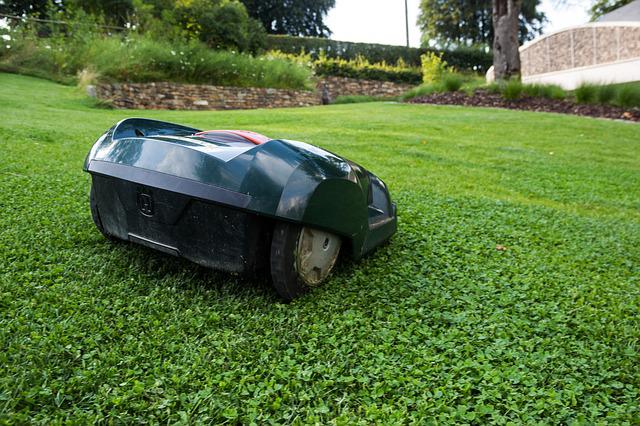
Think about how often you want to mow (or pay for mowing) in the long term. Some grasses require much more frequent mowing than others. For some, it is recommended you use a cylinder mower, another big outlay.
Water/fertiliser requirements and sustainability
Is the cost of water important to you? Do you value sustainability?
Some grass types survive without a problem being watered just twice weekly in summer, and some need little or no fertiliser. Others are much thirstier and hungrier.
Fertiliser and water are ongoing costs, particularly if scheme water is used, and costs will only increase in the future. Bear this in mind when selecting grass.
NOTE: Twice weekly watering is the maximum allowed with scheme water in Perth, using an automated system. Bore owners can water three times a week, but this may soon change to twice weekly.
Watering exemptions are possible when installing new lawns — you can apply via the Water Corporation.
Budget
As already discussed, decisions often end up being budget-driven.
If you can afford it, instant turf gives ‘instant gratification, with minimal up-front effort.
Fast-growing grasses are usually the most economical.
To get the best result you may need to install an automated irrigation system if you don’t already have one. If you travel for work or your schedule allows little time for watering, this is a must.
Talk to a landscaper about which systems work best in Perth conditions, and get some quotes.
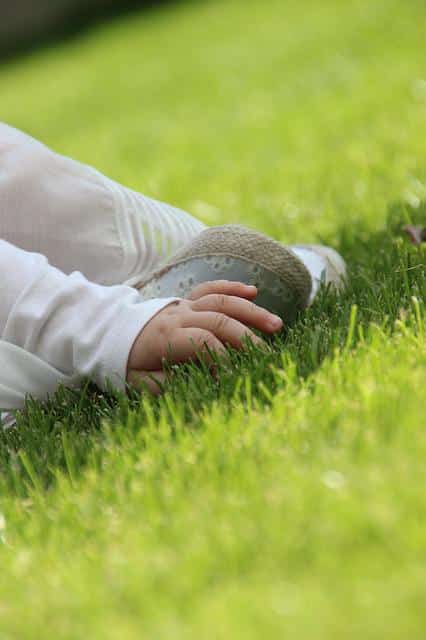
Aesthetics, feel and the ‘sneeze factor’
If the aesthetics of your home are a primary consideration, ask a landscaper to point you to some lawns they have installed. Check them out to see what appeals. Consider the colour and feel of the grass.
If children will be playing on grass (or you like to exercise on the lawn) softer varieties are most appealing.
If anyone has allergies, consider low-seeding grass types.
Area
The larger your proposed lawn area is, the more strategic it pays to be.
For large areas, costs can be substantial. Buying turf, runners or seed, watering costs while establishing grass, and long-term water, fertiliser and mowing costs, all add up.
There are some ‘tricks of the trade’ that may help – ask a landscaper for advice.
Grass Types in Western Australia
A variety of lawn grass types are used in Western Australia.
We have already discussed problems that can arise if you plant grass that doesn’t suit your conditions, so it’s important to choose the right grass for your garden and lifestyle.
Here we share our knowledge of ten of the best types of grass for lawns
We explain which conditions suit each of them, and their pros and cons, to help you make an informed choice.
Buffalo grasses – ‘Palmetto’ and ‘Sir Walter’
1. Palmetto Buffalo (stenotaphrum secundatum)
Palmetto Buffalo is one of the most popular grass types for Perth lawns.
Its benefits include:
- soft texture
- vivid green colour almost year-round
- low thatch (helps to stop it drying out)
- drought tolerance — it survives the full glare of our summer sun
- no rhizomes or underground roots, so it doesn’t invade pavers and garden beds
- hard-wearing, suits high-traffic areas
- produces little seed, so unlikely to trigger allergies
- needs less mowing than most buffalo grasses.
Palmetto’s CONS include that it:
- is not cheap
- loses colour in winter if not in full sun
- is slow to recover if damaged.
RECOMMENDED FOR: gardens where moderate watering and maintenance are desirable, families with children, and locations with good winter sun.
2. Sir Walter Buffalo (stenotaphrum secundatum)
Sir Walter is another very popular soft buffalo grass, very similar to Palmetto.
Key differences include these PROS. Sir Walter:
- keeps its winter colour in partial shade
- grows actively in winter, improving appearance
- has an even greater tolerance for wear and tear than Palmetto
- has slightly better drought tolerance.
CONS of Sir Walter include that it:
- is not as low-thatch as Palmetto
- produces more seed
- is faster growing so
- needs mowing more often.
For more information, check out this independent research carried out in WA.
RECOMMENDED FOR gardens where moderate watering and maintenance are desirable, families with children, locations with less winter sun.
3. Kikuyu (cenchrus clandestinus)
Kikuyu is another popular grass type. Its PROS are being:
- inexpensive
- sun tolerant, drought-resistant
- suits sandy soils
- fast-growing, covers bare areas quickly
- hard to damage, fast to recover from damage
- self-sufficient, no expensive fertilisers needed
- attractive in winter
- resistant to pests and diseases
- not highly allergenic.
Kikuyu does have some CONS. It:
- invades garden beds
- needs 5-6 hours of sun per day
- requires weekly mowing in summer
- is almost impossible to eradicate, resisting most herbicides
- forms a dense thatch – insects and fungus may thrive, depleting soil nutrients.
RECOMMENDED FOR: large gardens, ovals, parks, or any project with a tight budget.
Zoysia grasses – ‘Empire’, ‘Sir Grange” and ‘Platinum’
4. Zoysia Empire (Zoysia Japonica)
Zoysia Empire is a popular warm-weather grass. Its PROS include being:
- attractive
- soft underfoot
- shade tolerant for up to 40% of the day
- extremely drought resistant
- non-invasive and pest resistant
- low maintenance, not needing frequent mowing.
CONS include Zoysia being:
- relatively expensive
- not frost tolerant
- slow to establish, especially if growing conditions are not quite right
- slow to recover after damage.
RECOMMENDED FOR: Small to medium gardens, areas with light shade and families with children.
5. Sir Grange Zoysia (Zoysia Japonica)
PROS of Sir Grange Zoysia are that it:
- needs only 3-4 hours of sunlight
- is low maintenance, less mowing, pesticide and fertiliser than most grass
- is highly drought tolerant
- is fine, and soft
- recovers well if damaged.
CONS of this grass include:
- expense
- it is thick, so heavy work to mow, and can be damaged if cut wrongly
- it’s slow to recover if damaged.
RECOMMENDED FOR: Small to medium gardens, or larger spaces where budget permits and gardens in high-density areas where overshadowing is an issue.
6. Platinum Zoysia (Zoysia Japonica)
Platinum Zoysia’s PROS include that it:
- thrives in extreme heat
- requires less watering than most lawns – it rolls its leaves to conserve water
- is dense, soft to touch and dark green in colour
- is non-invasive of garden beds
- can be mown with a rotary mower (many fine leaf types of grass need mowing with a cylinder mower).
Platinum Zoysia’s CONS include:
- expense
- it performs less well in shade and may go brown in winter
- slow-spreading.
7. Fescue (Schedonorus arundinaceus)
Fescue is another popular grass, best suited to a cool climate but used in Perth.
Its PROS include that it:
- is hardy, grows well in poor soil
- does not need frequent mowing
- doesn’t die back in winter
- has deep roots, survives without irrigation if rainfall is regular
- germinates quickly.
Fescue’s main CONS include that it is:
- susceptible to pests and diseases in wet conditions
- coarse and bristly.
RECOMMENDED FOR: Cool areas with good rainfall and well-drained soil.
Couch Grasses – ‘Bermuda’ and ‘Wintergreen’
8. Bermuda Couch (Elymus repens)
Bermuda Couch is another popular grass variety in Perth. Its PROS include being that it is:
- hardy, with a strong root system
- drought resistant yet survives being waterlogged
- tolerant of sandy, saline, acidic, alkaline, and clay soils
- fast to establish
- traffic tolerant
- quick to recover if damaged.
Some CONS of Bermuda Couch include that it is:
- not shade-tolerant
- invasive, creeping into garden beds
- less soft than some couch grasses.
RECOMMENDED FOR: family lawns with high wear and tear, climates with extreme heat and wet.
9. Wintergreen Couch (Elymus repens)
‘Wintergreen’ Couch, also called Nullarbor Couch, is very popular in Perth. Its PROS include being:
- tough, hard wearing
- tolerant of winter cold and strong sun
- soft, fine, a good colour
- relatively cheap
- environmentally friendly.
CONS of this grass include that it:
- loses colour in winter if not well-maintained
- invades paving, garden beds
- can’t be eradicated using general herbicides
- is expensive to maintain.
RECOMMENDED FOR: Suburban homes with low water use and/or a tight budget, golf courses, tennis courts, and wherever close mowing is required.
`10. Elite Backyard Blend
Elite Backyard Blend is a popular seed mix.
It contains Sports Turf Ryegrass (Lolium perenne) and Creeping Red Fescue (Festuca rubra).
Its PROS include:
- shade tolerance
- drought resistance
- summer-active and winter-active seed types
- soft texture, good colour
- reasonably hard wearing
- resilient in winter
CONS include:
- not coping well with harsh summers
- needing plenty of water in summer to stay green.
RECOMMENDED FOR: Suburban homes with high traffic, shady gardens, and frost-prone areas. It suits regions where conditions can be hot and cold at different times.
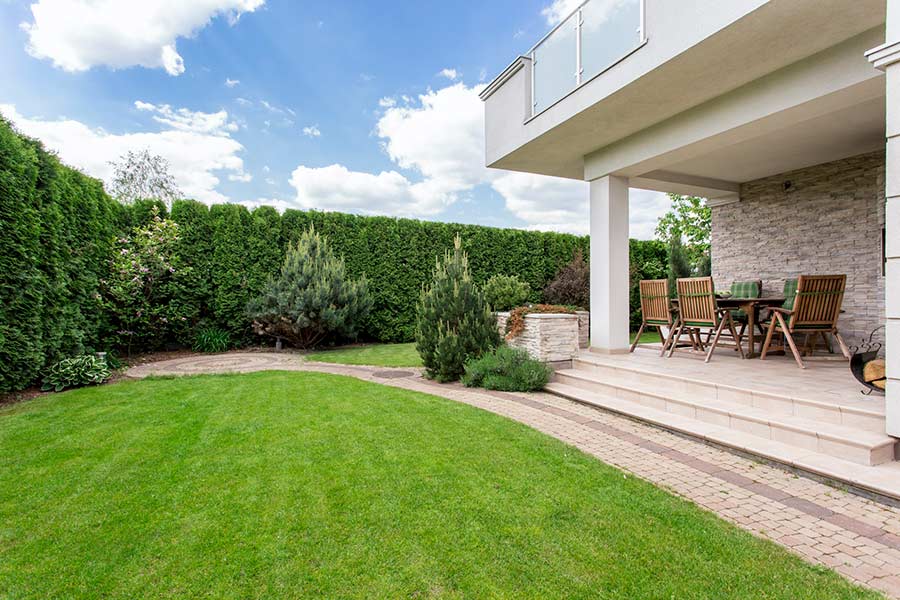
Best ‘All Rounder’ Lawn Grass Type
Are you still struggling to choose the right grass for your lawn?
We’d love to be able to recommend the best all-rounder grass and solve your dilemma, but it just isn’t quite that simple.
There are certainly some very popular grasses, but as we’ve explained, the best results come from analysing your growing conditions, taking into account your budget and the time you can realistically spend on maintenance.
The best thing to do if you’re unsure which types of grass to plant is to contact the experts at Perth Landscaping. We’ll look at your site, listen to your needs, and help choose the best lawn grass for you. We can even help you install it so that you get that perfect finish. Our sister company Perth Gardening Experts also have some top lawn care tips which will help too.
In the long term, getting it right the first time could save you a lot of time, money and frustration!
The right grass for you – make the choice with Perth Landscaping Experts
So how will you choose the right grass to create your own personal oasis of green?
We’d love to help with your choice. Give us a call today on (08) 6263 4646 .

